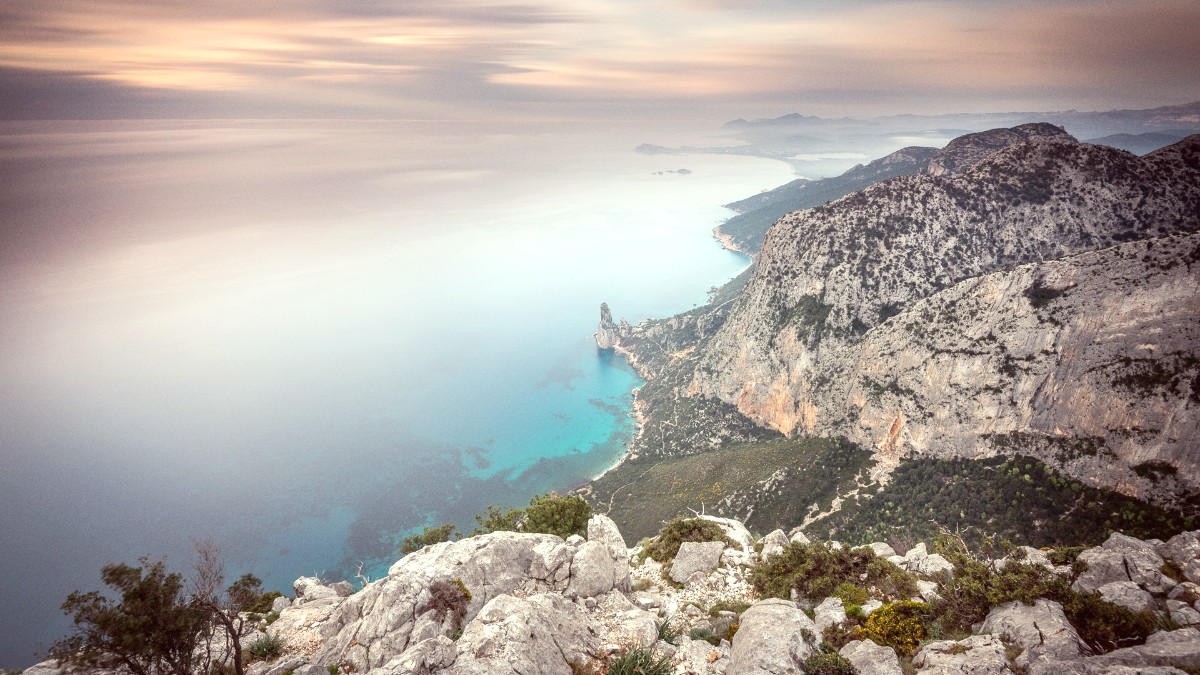
Sardinia, Italy
Travelers find themselves captivated by the historic district, Sa Costa. Each building tells a story, with bright facades reflecting centuries of maritime and mercantile activity. Wander through these streets and you find artisan shops, small cafes, and traditional eateries.
Bosa Marina, a short distance from the town center, provides a different experience. Here, a wide sandy beach provides ample space for sunbathing and swimming.
The combination of the historic town and the beach resort creates options for various interests. This guide outlines everything for your trip to Bosa. Prepare to explore this Sardinian treasure.
The Temo River defines Bosa’s geography. This river is unique as Sardinia's only navigable waterway. It flows through the town, from inland areas to the Mediterranean Sea, about 3 kilometers (1.9 miles) from Bosa's center. The riverbanks are pleasant for promenades and scenic boat trips. The colorful houses of Sa Costa reflect in its calm waters, a view inspiring artists for generations.
Coastal hills frame the town, adding to its picturesque backdrop. The historic Monte Leone, in particular, rises prominently, forming a natural barrier and a vantage point. These hills are not just scenic; they also present opportunities for hiking and exploring the local flora. The coastline near Bosa is rugged, with dramatic cliffs, hidden coves, and a mix of sandy and rocky beaches. This varied terrain leads to a wide range of outdoor activities.
West coast of Sardinia, Italy, in the province of Oristano, approximately 40°17′N 8°30′E.
Mediterranean, with warm, dry summers and mild, wetter winters.
Temo River, Sardinia's only navigable river, offering calm waters through town.
Coastal hills like Monte Leone and rugged coastline with cliffs and coves.
The blend of river, hills, and sea forms a distinct microclimate and varied natural attractions.
The meeting of river, hills, and sea gives Bosa its distinct microclimate and varied natural attractions. This geographical diversity creates an appealing destination for many types of travelers.
The varied terrain near Bosa makes for a wide range of outdoor activities, from relaxing on the sand to exploring secluded natural pools and hiking the scenic hills.
The river flowing through Bosa provides serene views, especially with the colorful houses of Sa Costa reflecting in its calm waters, a scene that has inspired artists for generations.
Bosa occupies a special place on Sardinia’s west coast. It sits in the province of Oristano, a region known for its diverse landscapes, from golden beaches to ancient ruins.
Bosa's history stretches back thousands of years, mirroring the various civilizations that have left their mark on Sardinia. Its origins trace to Phoenician times, with archaeological evidence of an ancient settlement, Bosa Vetus, located south of the current town. The Phoenicians, skilled seafarers and traders, recognized the strategic value of the Temo River estuary, setting up a port that facilitated commerce across the Mediterranean.
The modern town of Bosa grew around the formidable Castello di Serravalle, more commonly known as Malaspina Castle. The Tuscan Malaspina family built this fortress in the 12th and 13th centuries. The castle’s hilltop position offered commanding views, offering protection and strategic control over the fertile Temo valley and its access to the sea. Its construction marked a pivotal point in Bosa’s development, solidifying its role as a regional power.
During the medieval period, Bosa thrived as an important port and commercial center under the Kingdom of Arborea.
Bosa's historical center, Sa Costa, retains its medieval layout, with narrow, cobbled streets and colorful houses.
The 19th-century tanneries, Sas Conzas, showcase a significant period of leather production in Bosa’s economy.
Aragonese and then Spanish rule brought new cultural influences, which remain visible in some of the town's architecture and traditions.
West coast of Sardinia, Italy, in the province of Oristano.
Malaspina Castle (Castello di Serravalle), a 12th-13th century fortress.
A blend of traditional Sardinian pastoral dishes and fresh seafood, with Malvasia di Bosa wine.
Traditional economic activities that sustained the local population for centuries.
An ancient artisan skill, reflecting the town's connection to the sea.
A major industry in the 19th century, especially evident at the Sas Conzas tanneries.